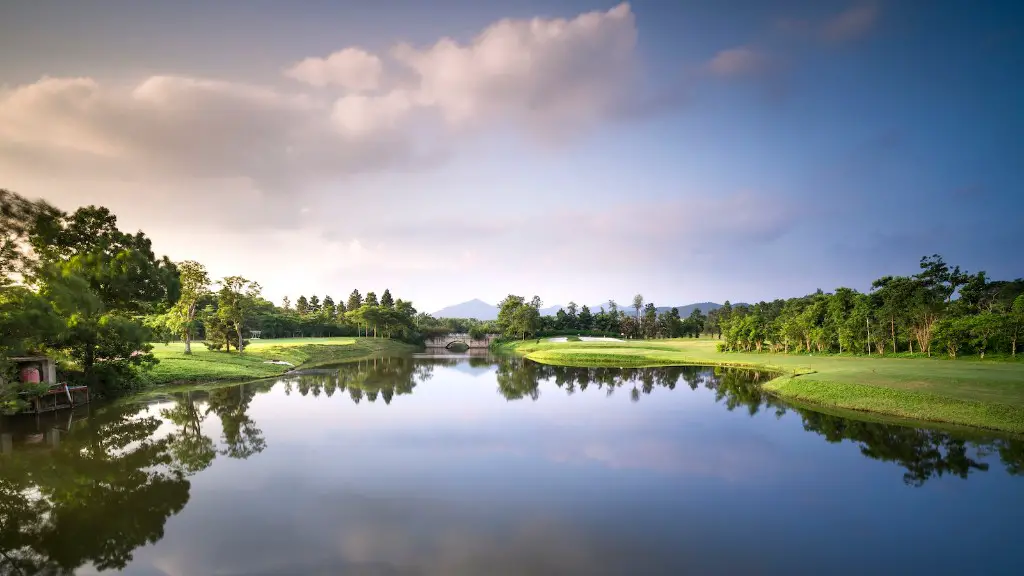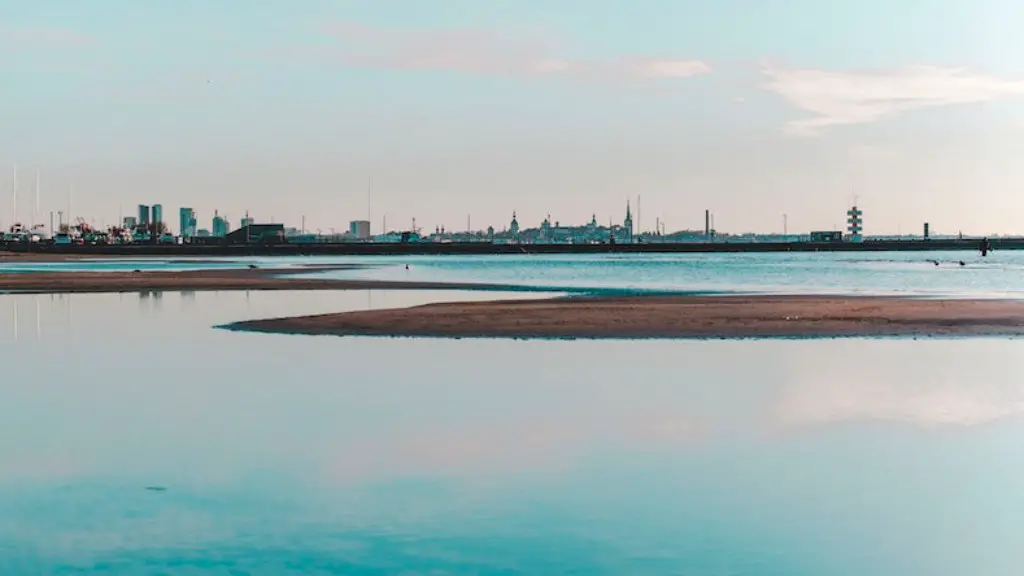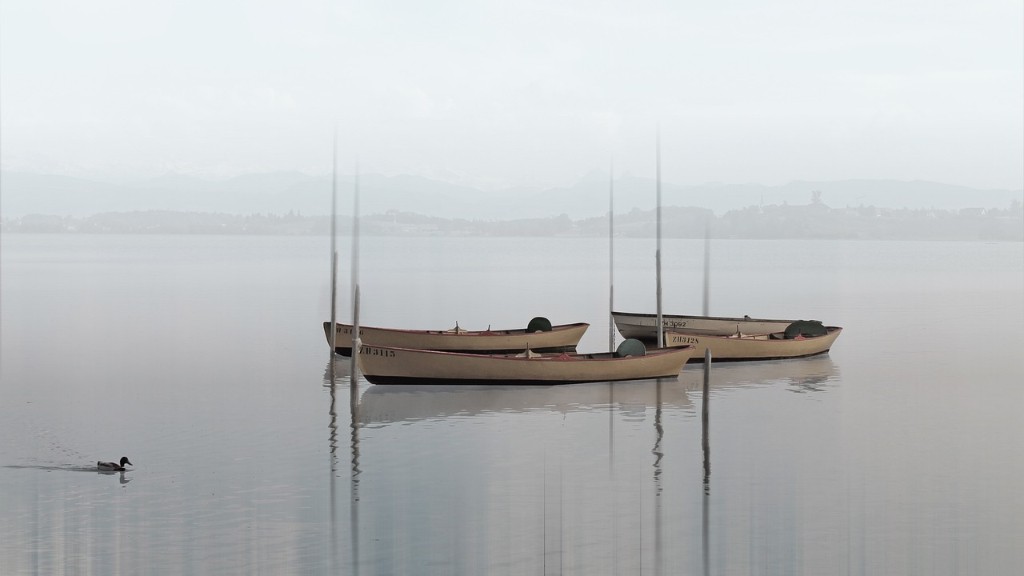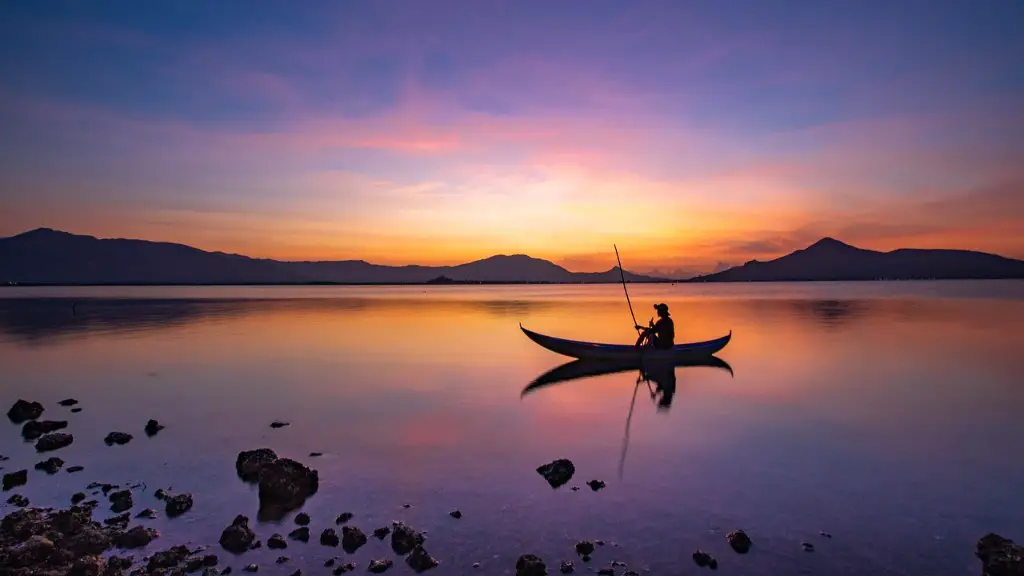Introduction
Waves are an integral part of life on Lake Michigan. They bring fun and adventure to swimming, boating, and other recreational activities. Waves can also be dangerous, as they have been known to drown, capsize, and injure people. But why are there waves on Lake Michigan in the first place? Waves form each time the wind blows across the open water of Lake Michigan. As the wind moves and the water is pushed, the energy the wind is carrying creates a wave. How much wind and the strength of the waves vary depending on where the wind is coming from, how long it’s blowing, and other factors.
Formation of a Wave Cycle
A wave is measured in what’s called a wave cycle. This begins with a crest, which is the highest point of a wave. As the wave continues to spread, it reaches the top of its cycle, then descends down into the trough, the lowest point of the wave. As the waves pass, the troughs eventually become crests and the cycle begins again. The magnitude or height of a wave is determined by the amount of energy that was provided to the wave at its origination. Waves are also directed by the wind’s energy. The wind can carry the wave energy across a large area or it can direct it in a certain direction.
Formation of a Wave in Lake Michigan
When it comes to Lake Michigan, wind interacts with the large expanse of open water. When surface winds blow, the wave action begins. The shallow shore areas at the lake act as a break for larger waves, allowing them to reform as smaller waves closer to the shore. This can create ocean-like swells that can reach up to six feet high. As the wave moves, it creates a curved breaking wave that rolls in towards the shore. This rolling wave is unique to water bodies including Lake Michigan and creates the foamy, misty effect many watersport enthusiasts enjoy.
Factors Affecting Wave Size on Lake Michigan
There are several factors that influence wave size on Lake Michigan, mainly wind speed and the size of the lake. The stronger the wind is, the more energy it carries and the bigger the waves on Lake Michigan. In addition, Lake Michigan is the fifth largest lake in the world which contributes to the wave size. As the wind passes over the large expanse of water, its effect is magnified.
Potential Hazards of Wave Conditions on Lake Michigan
The wave conditions on Lake Michigan can be dangerous. Boaters, for example, could be in danger of capsizing or being swamped.The wave conditions can also be a danger to swimmers, as the waves can pull the person deeper, disorient them, and make it harder to swim back to shore. It is important for people to pay attention to the wave conditions before engaging in activities on Lake Michigan.
The Benefits of Wave Conditions on Lake Michigan
Despite the potential hazards, wave conditions on Lake Michigan can be beneficial for some activities. The wave size offers an opportunity for wavesport enthusiasts, such as surfers and bodyboarders, to enjoy the larger waves. The wave conditions also offer a natural rolling action that can give a person a ‘boost’ while they’re surfing or swimming. Finally, the wave conditions add a natural beauty when they foam and break along the shore.
Closing Thoughts on Why There Are Waves On Lake Michigan
Waves on Lake Michigan are formed when surface winds interact with the large expanse of open water, but the size of the waves depend on the strength of the wind and the size of the lake. The waves can be both beneficial and destructive to users of the lake, and in any case, it is important for people to pay attention to the wave conditions before participating in recreational activities on Lake Michigan.
Male Fish Species Found in Lake Michigan
Lake Michigan is home to a variety of fish species, including two species of male-specific fish. The male species, brown trout and chinook salmon, are unique to the lake’s ecosystem and are both sought-after by anglers. The brown trout is native to the lake and can grow to very large sizes. The chinook salmon, which is an introduced species, is also popular with anglers because of its large size and tasty flesh.
The Economic Impact of Fish Species on Lake Michigan
The fish species that inhabit Lake Michigan have an economic impact on the region. For example, anglers travel to Michigan to fish and contribute to the state’s economy. The fish are also a source of food for local residents, as well as a source of revenue for commercial fishermen. Finally, the overall health of the lake’s fish population is an economic indicator of the lake’s wellbeing and is an important factor in determining the lake’s fishing regulations.
Protection of Fish Species Found in Lake Michigan
The health of the lake’s fish population is important for protecting and preserving the diversity of species found in the lake. In addition to fishing regulations, anglers are also reminded to practice catch-and-release fishing as a way of protecting the fish species found in Lake Michigan. The fish species found in the lake are a valuable resource and should be protected for future generations to enjoy.
The Benefits of Angling in Lake Michigan
Angling in Lake Michigan can be a rewarding and enjoyable experience. It is important to understand the rules and regulations involved in angling, as well as the fish species found in the lake, before participating. Angling in Lake Michigan can bring fun, adventure, and a sense of accomplishment, as well as an opportunity to learn about the local environment and ecology.
The Impact of Climate Change on the Lake Michigan Ecosystem
Climate change is an important factor to consider when discussing the fish species found in Lake Michigan. As the climate continues to warm, the lake’s habitat and ecology may be adversely affected. Some of the impacts of climate change include rising Lake Michigan levels, changes in the lake’s water temperature, and shifting fish populations. Climate change also affects the lake’s waves and currents, both of which are important to the lake’s aquatic life.
Human Activity and the Preservation of Lake Michigan
Given the impacts of climate change, it is important for people to take steps to preserve the lake’s habitat and water quality. Limiting the amount of runoff and pollutants that enter the lake is one of the most important steps people can take to keep the lake safe and healthy. In addition, fishing responsibly and practicing catch-and-release fishing are also important steps to preserving the fish species found in Lake Michigan.



